Exam 3 - rediscovery/classical world
1/40
There's no tags or description
Looks like no tags are added yet.
Name | Mastery | Learn | Test | Matching | Spaced |
|---|
No study sessions yet.
41 Terms
The skill of the Romans as builders and engineers
Romans excelled in practical engineering, combining Greek and Etruscan techniques with innovations like concrete and the rounded arch. They built durable, functional structures (e.g., roads, aqueducts) that helped maintain their empire.
The main types of Roman constructions that helped establish and maintain the Roman presence around the empire
Roads enabled rapid military movement and trade. Aqueducts supplied cities with fresh water. Bridges and ports improved transportation and commerce. Mining provided resources like lead, silver, and stone.
The importance of town-planning, roads, aqueducts, bridges, ports, and mining
Irrigation contributed to the success of the Roman civilization
Cities were organized with grids, forums, and public spaces. The aqueduct is still functional today, and water was taken from underneath the mountains, and they used gravity to steer the water down. Additionally, they coated the inside of the water pipes with lead, which caused lead poisoning over time. The sewer system, cloaca maxima, was also advanced because when bathwater was done being used, it was transferred to be flushed down toilets and used as plumbing.
The significance of the rounded arch and concrete in Roman buildings
Rounded arches were important because they distributed weight evenly, allowing larger structures such as the Colosseum to be made. Concrete was an engineering feat that the Romans used, and Pliny the Elder wrote down the recipe in the 1st century CE, but it was unfortunately lost over time. The recipe for concrete is a mix of lime, water, volcanic ash, and crushed stone.
The special place of the bath house and bathing in Roman culture
Roman bath houses were considered community centers where both men and women bathed together and socialized. The Romans prioritized function over beauty, unlike the Greeks, and understood how complex heating systems worked and even generated underfloor heating in their marvelous baths. Before entering the heated rooms, many Roman men would do their version of cleaning, which consisted of getting covered in oil, going out and wrestling to build up sweat, and then using a strigil to scrape off sweat. Then they would enter the heated room to bathe with other patrons. There were also three notable bath houses. The patron would enter the cold room first, a warm room second to change into clothes, and the hot room with heated baths.
ALWAYS: How do we know what we know about these particular aspects
of ancient Roman culture?
We know this due to the archeological evidence regarding aqueducts, roads, and baths. Along with the lead pipes with stamps of drainage systems, and being able to analyze concrete samples. Pliny the Elder wrote about the concrete making, lead pipes, and mining, and there were inscriptions and graffiti found on the walls.
The role and types of public spectacles in the Roman world
Romans loved gladiators and killing exotic animals in the rink, like lions and tigers. If the lions didn’t attack in the rink, then the Beastmaster was labeled as responsible and was killed publicly. Titus, the emperor, had people decide the fate of the lesser-known gladiators in the rink (the ones that entered after the lions and who had less experience) through a supposed thumbs up or down system
The types of Roman buildings that were created and/or developed to facilitate public spectacles
Hippodromes were popular as they involved chariot racing, hippo meaning horse, so horse racing. There were also circuses and theaters, which were inherited from the Greek world. Theaters also had staged plays, which were often semicircular (Greek-style).
The history and importance of the Colosseum in Rome
At the time, they called the Colosseum the Flavian amphitheater (double-theater) after the family Emperor Vespasian of the Flavian dynasty. The emperor of the time also wanted it to be the biggest and most complex colosseum there was to date, and it was built to hold 50,000 people. Additionally, it had a cloth awning, velarium, that could be retractable for shade and rain. The name Colosseum originates from the Colossus of Nero sun god statue situated outside the stadium at the time.
Examples of artifacts that demonstrate the significance and popularity of public spectacles in Roman culture
Mosaics & paintings depicted gladiators, such as the Zliten Mosaic. Roman men were said to have three names, usually written in these paintings, while lower-class men only had two names. Graffiti provided accounts of fan messages. Many gladiator helmets & weapons were found in Pompeii and the barracks. Curse tablets were also found and had written prayers for a gladiator’s defeat.
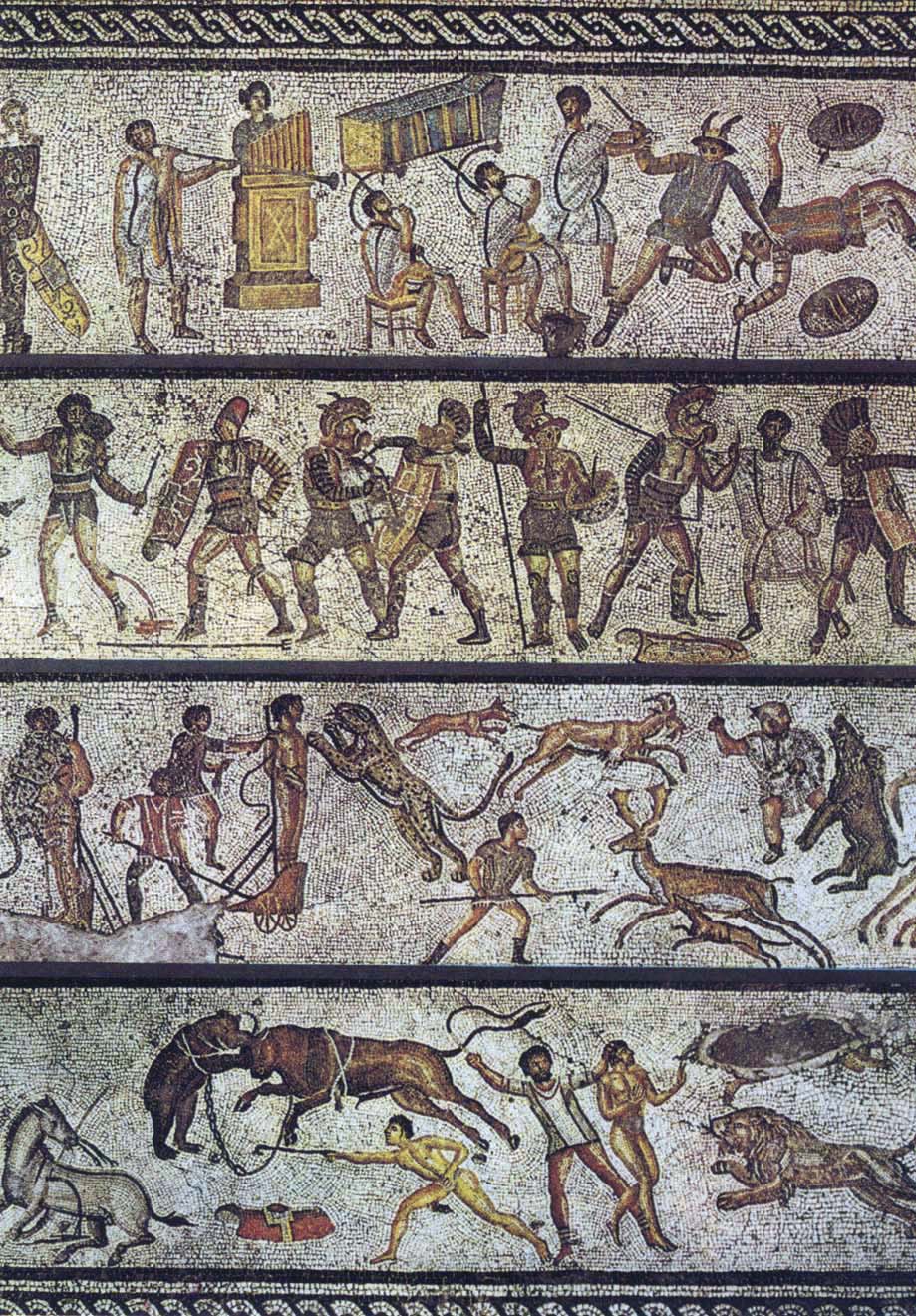
The life and experience of a gladiator
It was said that to be a gladiator, you had to “make a pact with death,” and most gladiators came from captured cities, and many were former slaves to Rome. Gladiators in training were taken to gladiator institutions and were compared and picked among higher-ranked Roman sponsors, similar to football players being picked today. Those who weren’t slaves sold themselves for 5 years to pay debts or get fame. After 3 months of training, gladiators would be picked, and the night before they fight, they would have a lavish feast with men and their sponsors. Other entertainment was provided. Before men’s battles, they would sometimes leave offerings to the Roman goddess Nemesis, who stood for revenge, chance, and faith. The fights themselves had rules they had to abide by, and if the gladiator lost, the crowd or emperor could decide their fates (pollice verso, aka thumbs down). Contrary to popular beliefs, they did not die; often, they lived because sponsoring a gladiator was expensive. Gladiators themselves got paid a soldier's salary and could buy luxury goods like prayer altars and new clothes. Romans also had great medical care for their gladiators and used stints for broken bones, but could do nothing about internal bleeding. When gladiators earned enough money, they would either become a gladiator trainer or leave to pursue a more fulfilling career, or simply go back home.
Story of Versus and Priscus
Versus was a slave in a pit, and he was taken from the pits to become a gladiator after making a show by attacking Priscus, another random slave at the time. Versus lost his first battle in the gladiator rink in the institution, but came back and won against a man named Ferous, who had a double winning streak. Later, he killed a random man in front of the emperor and his son Titus. His friend Priscus was sold to the South during this time. He eventually reunited with Priscus at the colosseum, in the rink, and the two had to fight to the death. This fight was the only one ever written down in detail. Once one man lost an item like a shield, the other had to do the same to make it even. (These were the rules) In the end, both parties survived due to them impressing Titus and the crowd and putting on a good show.
The role and activities of the soldier in the Greek and Roman worlds
Greek Soldiers - In ancient Greece, the backbone of the army was the hoplite, a heavily armed infantryman who fought in a tight formation called the phalanx. Hoplites were typically citizen-soldiers—free men who supplied their own armor (bronze helmet, breastplate, greaves, and a large round shield called an aspis). Their primary weapon was the dory (a long thrusting spear) and a short sword (xiphos or kopis) for close combat. In city-states like Athens and Sparta, military service was tied to citizenship. Spartans were professional soldiers, while Athenians served as needed. Athens relied on its trireme fleet, rowed by free citizens and metics (foreign residents), which played a crucial role in the Persian Wars and the Peloponnesian War.
Roman soldier - they evolved from the early citizen militia of the Republic to the professional legionaries of the Imperial era. During the Imperial Era (27 BCE–476 CE) Augustus reformed the army into a standing professional force. Legionaries served for 20–25 years, earning pay, land, and citizenship. Soldiers were trained relentlessly in marching (20+ miles/day with full gear), weapons drills, and fort construction. They also built roads, aqueducts, and participated in policing provinces.
The basic organization of the Roman army
Rome changed from a citizen army to a standard army. Citizen armies fought when necessary, while standard armies were taught and trained like modern-day military. They had troop stations all over the empire due to the vast territory Rome acquired, and they had a strict organization. They had Legions which consisted of 5,000–6,000 men, and the core unit was divided into 10 cohorts. The cohort consisted of 800 men. Auxiliaries were non-citizen troops recruited from provinces, and they provided cavalry archers and light infantry. They would receive citizenship after 25 years of service. Additionally, they had a classic (Navy) that patrolled the seas.
The basic layout of a Roman fort
Soldiers built temporary marching camps (castra) every night on campaigns. These Roman forts were standardized across the empire for efficiency. A typical fort housed 500–1,000 soldiers, and they built high wooden or stone walls with a V-shaped ditch (fossa). There were shrines for legionary standards, a commander’s house, barracks, which were long buildings that held 8 men per room, and workshops and stables for armorers and cavalry. Tombstones of Roman soldiers give insight into how these men lived and died, and there were written records found of many soldiers asking for socks.
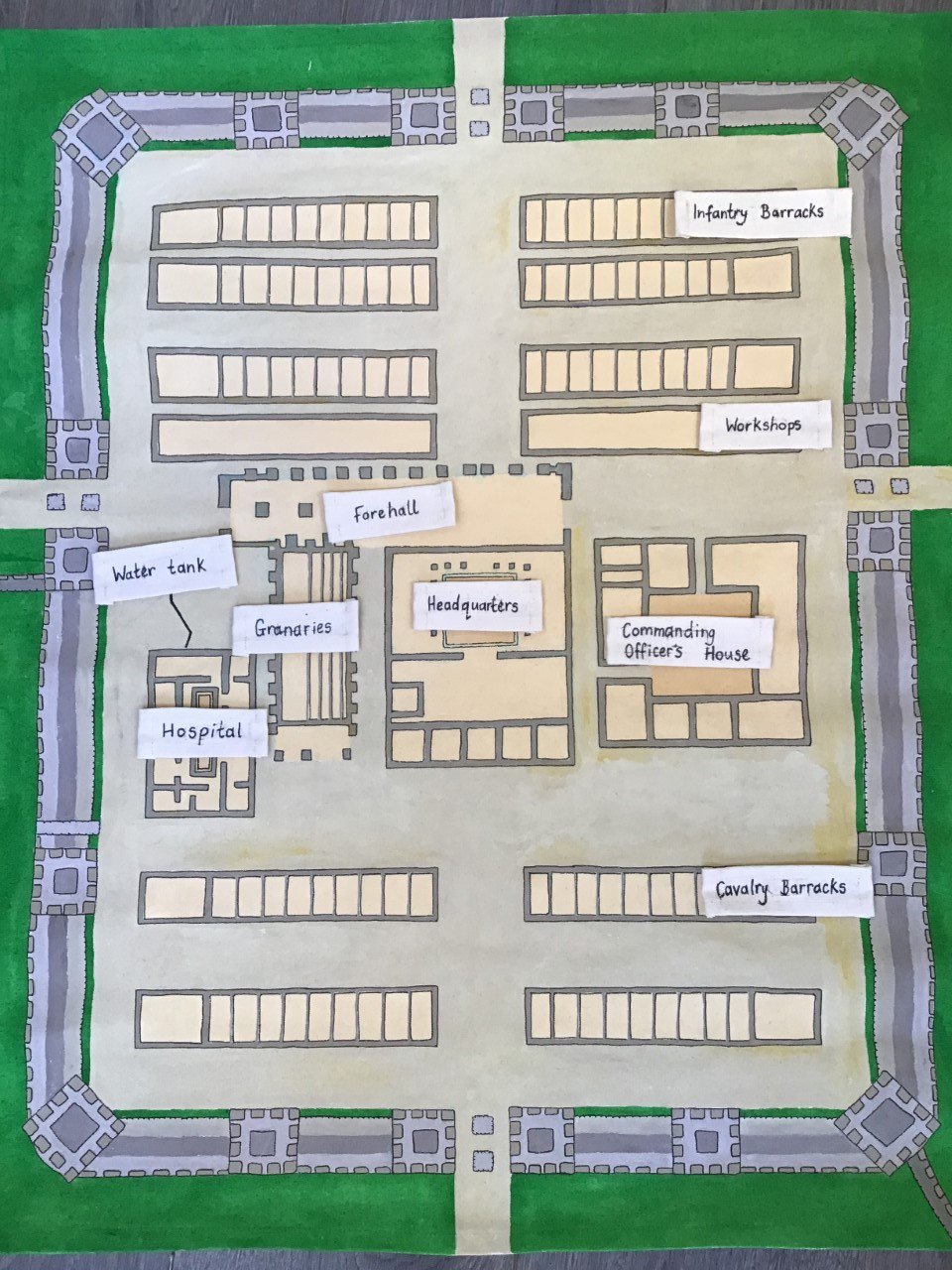
The significance of the Battle of the Teutoburg Forest
Germanic tribes led by Arminius, who was taken hostage as a child and raised in Rome as an auxiliary officer, were ambushed by 3 legions (XVII, XVIII, XIX) under Publius Quinctilius Varus. Arminius secretly organized a pan-Germanic rebellion, uniting tribes and fed false information to Varus so he’d run into the ambush. The Romans were later lured into the dense Teutoburg Forest, modern Germany, and annihilated in a 3-day battle. All three legions were wiped out—Rome never reused their numbers due to considering it a curse. Rome permanently withdrew east of the Rhine, making it the empire’s northern border. We know all of this due to Tacitus and Cassius Dio (Roman History) describing the battle in scripture. The Kalkriese site is confirmed to be the battle’s location due to there being mass graves with Roman bones showing blunt-force trauma, Roman coins minted before 9 CE being found, and slingshot bullets and fragments of legionary armor.
Day 1: Germanic forces ambushed the Roman column, stretching it out.
Day 2: Romans tried to regroup but were picked off by guerrilla attacks.
Day 3: Final massacre; Varus committed suicide, and survivors were enslaved or sacrificed.
How Christian Rome adapted the Classical style for a new ideology
Emperor Constantine was the first Christian emperor of Rome and had a crest put on his armor and shields known as the chi-rho symbol. He had several Christian supporters but didn’t outlaw paganism, and other gods like Isis and Jupiter were still popular in Rome. Constantine also funded the building of churches such as St Peter’s Basilica, but also restored pagan monuments like the Temple of Venus and Rome. Early Christian art avoided Greco-Roman idealized bodies (Jesus was depicted as a humble shepherd, not like Apollo).
What was lost when Rome fell
During this time, they lost how to make concrete, forcing them to make all their buildings out of stone, and Gothic architecture was made after the fall, and called “modern architecture” at the time. The centralized government also fell, and fragmented kingdoms took power, and urban cities declined.
The survivals and the transformations of the Classical Tradition during the Middle Ages
Rome vs the Germanic Goths caused the fall of Rome in 410. These Visigoths looted Rome but respected Christian sites. A lot of Roman culture was preserved by romanticized Celts, and Christianity was written down in monasteries in England/Scotland. They created illuminated manuscripts, and monks copied Virgil, Plato, and the Bible. Early Christian art avoided Apollo-like beauty, showing Christ as teacher (Pantocrator) or sacrificial lamb.
Knowledge of the typical and featured monuments that were discussed for this topic
The Basilica of Saint Peter was created as a Christian church and was built over a Roman necropolis (cemetery). Peter was publicly executed and buried there, and his grave was given special treatment. The church of Santa Sabina retains Classical columns (doric order from pagan temples). And they made wooden doors carved with Biblical scenes, replacing Roman triumphal imagery. We know all of this due to excavations under St. Peter’s Basilica confirming Peter’s tomb. And text detailing Constantine's Christian policies.
How the rediscovery of both text and material culture led to a revival of Classicism at the end of the Middle Ages
Poggio Bracciolini found a manuscript, the Latin Poem Lucretius, that had been missing for over 1,000 years. Its re-release changed the course of human thought processes at the time and inspired great minds. Older universities even decided to build their buildings in an old, classical style, and with antiquity.
Some of the major artists and monuments of the High
Brunelleschi - developed rounded Roman arches in his architecture, and people in Florence were in awe due to their recreation. He also reinvented the dome, which was not possible until now. The cathedral of Santa Maria del Fiore began being built in 1296, and the dome was completed and added in 1420. He engineered it to be built out of brick and stone by creating interlocking bricks to stack upon each other. Domes were popular in Roman times, but with the concrete recipe going missing, they couldn’t make them up until this point. The Pantheon and Temple of Apollo had domes as well and inspired him.
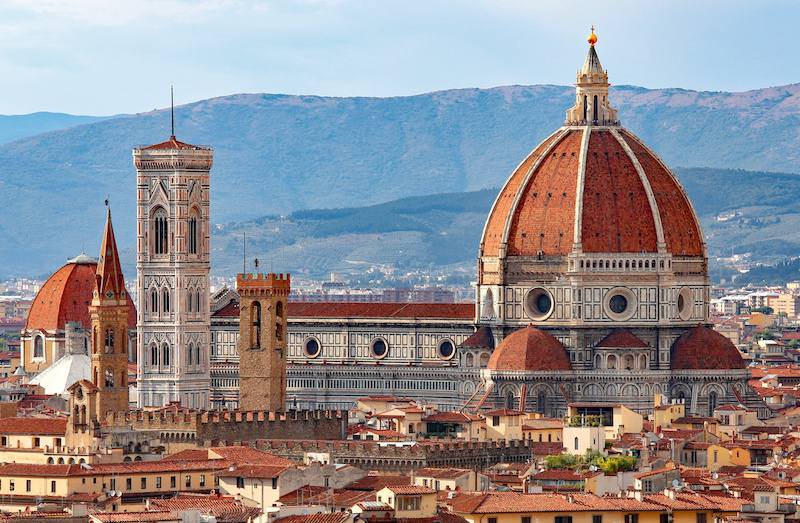
David, Donatello, 1440
made out of bronze, showed a nude form of David to show his weakened form, and his helmet is similar to Hermes and loral leaves, and he revised the antiquity technology of creating bronze statues. His statue is also in the classical ideal form
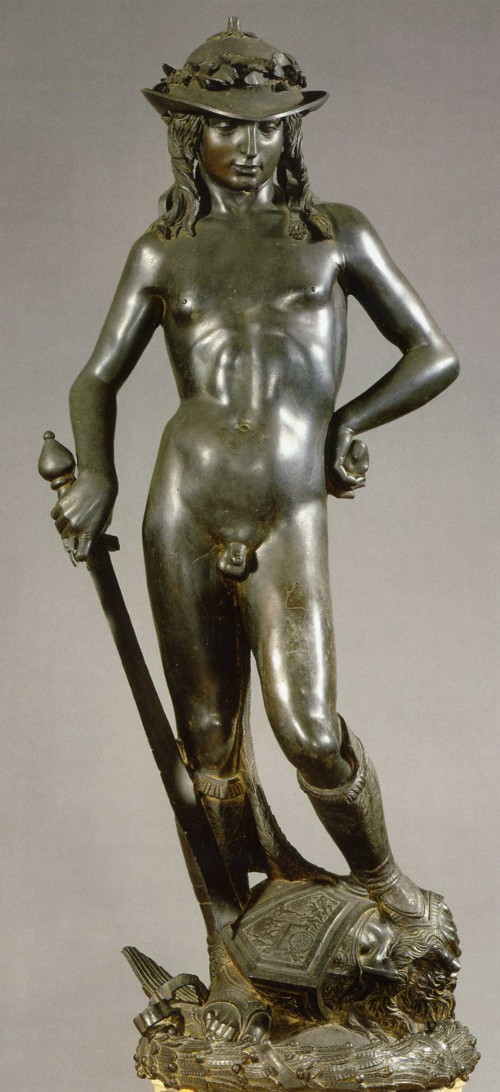
Botticelli, Birth of Venus, 1485
Aphrodite holding herself in classical and modern poses and it was commissioned by the Medichi family. It is supposed to celebrate her life and beauty. In a very Christian world of the time, this piece stands out because it depicts a pagan god.
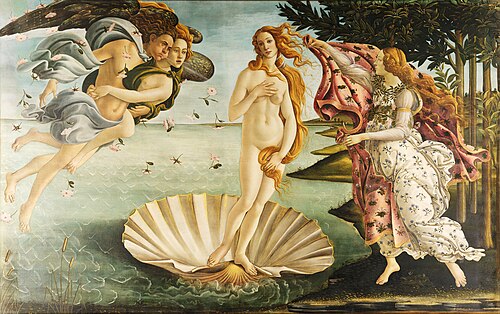
Da Vinci, Mona Lisa, 1504
Her facial structure was very similar to classical form, and she looks very human and realistic. The painting is on a wood panel, and it’s similar to the Fuyamai portraits.
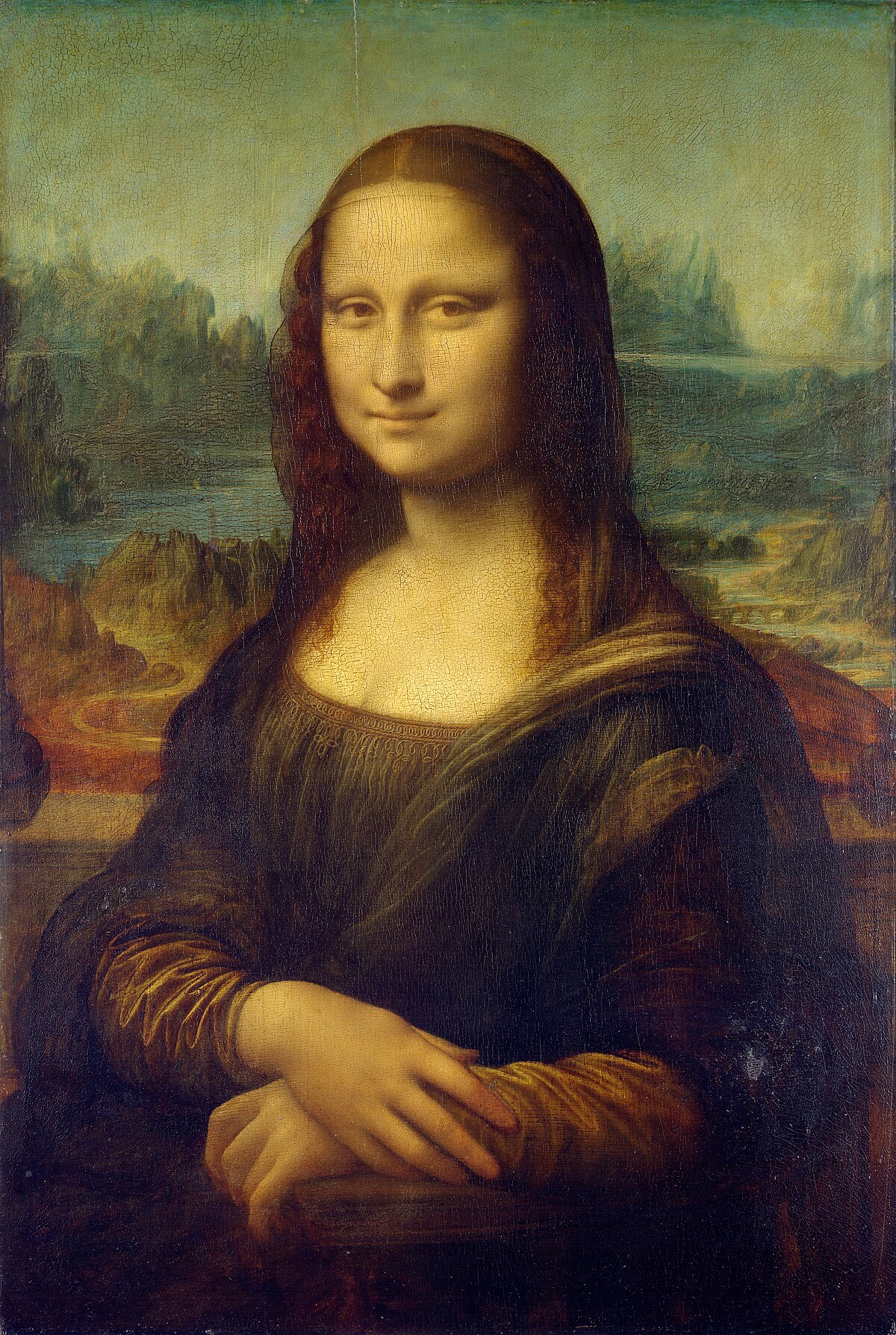
Michelangelo, David, 1504
symbol of foreign strength and pride, it’s a marble sculpture and shows the human form. It’s meant to be looked at from a worm’s eye view, hence the proportions being off (hands too big, shoulders too narrow). It’s in the caraposto pose similar to Hellenistic statues like the Laocoon. Michelangelo even did repairs and studied the Laocoön statue.
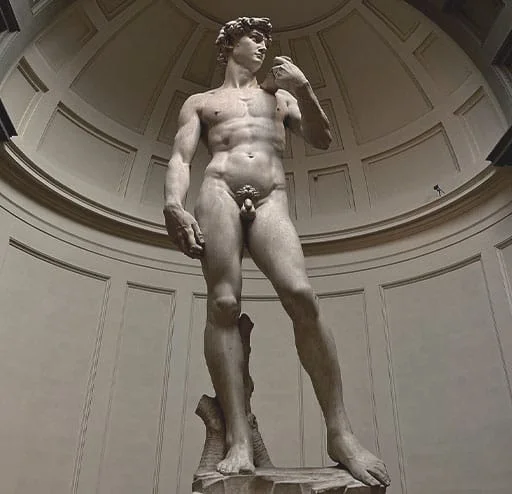
Raphael, School of Athens, 1511
commissioned by the Pope for decoration, it includes many classical philosophers such as Socrates and Aristotle. It included Roman-style rounded arches and Apollo and Athena statues in the background.
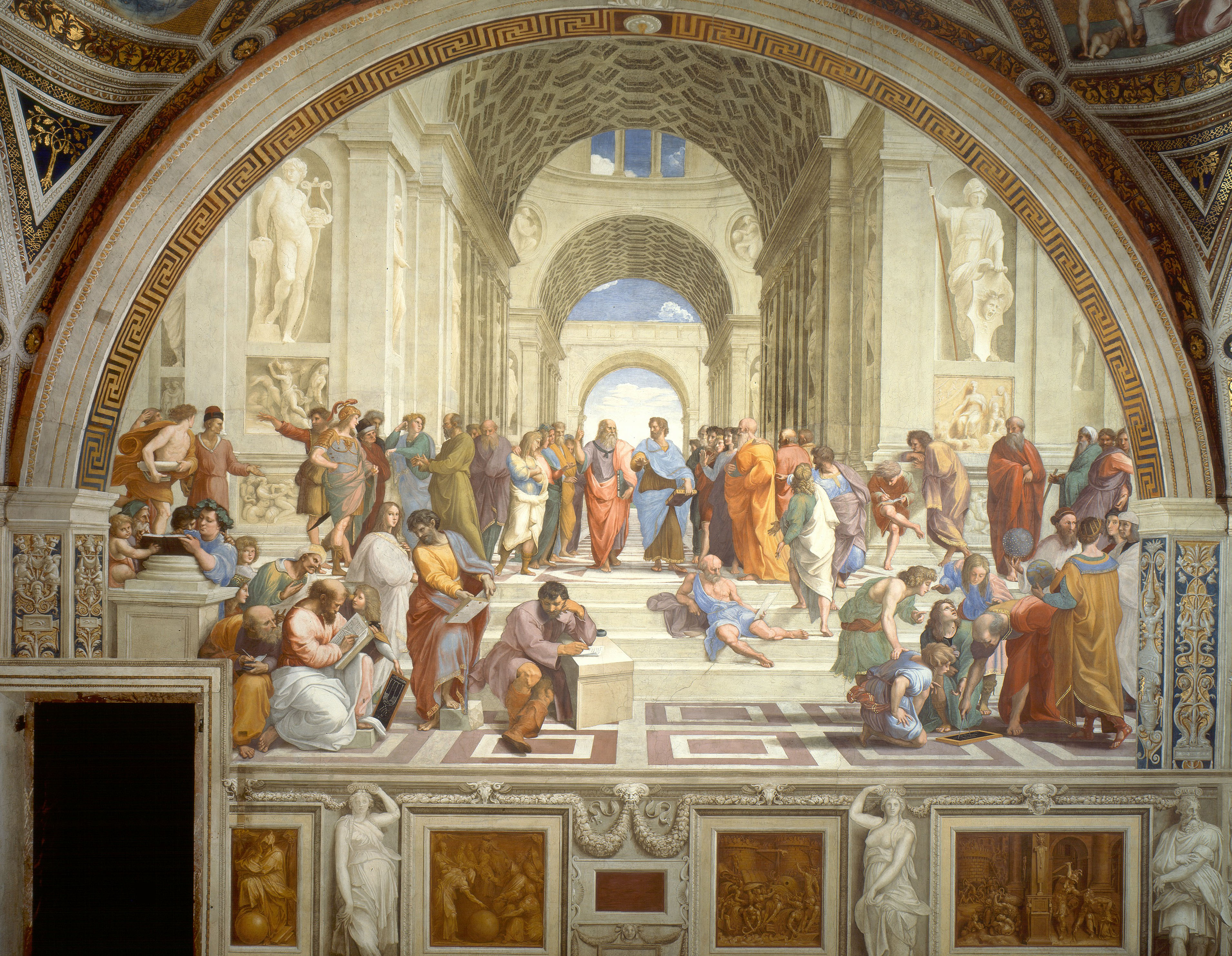
Renaissance, and how they were inspired by the standards of Classical art and architecture
It drew in the ideal cityscape using Roman grid plans. Andrea Palladio’s villas copied Roman temples such as the Villa Rotonda. Humanism at the time focused on anatomical accuracy, and there were mythological themes in Raphael’s School of Athens, which depicted Plato and Aristotle like Olympian gods. (Fun fact: Botticelli later burned his "pagan" works under Savonarola’s influence.)
The tools and sources for the early modern rediscovery of the Classical world
Ground surveys - having team members physically walk the area to find remains
Aerial surveys - Satellite imagery and drones reveal crop marks or buried ruins
Lidar - can see through trees in a jungle, rain forest, and vegetation. Originally developed to detect explosives underground
Electrical resistivity - shoot electrical currents into the ground and measure soil resistance to locate walls or tombs
Infrared images - Detects heat signatures of buried structures (able to find many lost pyramids and sites like Tanis)
Magnetometers - measure magnetic fields in an area
These tools helped debunk myths (like Heinrich Schliemann’s exaggerated Troy claims) and preserve sites from looting
The effect of the rediscovery of Pompeii and Herculaneum on the Western world
Pompeii was rediscovered in 1748, buried by Vesuvius in 79 CE, and its excavation revealed everyday Roman life: Frescoes, graffiti, and even bread loaves. Neoclassical artists copied their frozen-in-time drama (The Last Day of Pompeii by Karl Bryullov). Herculaneum was found in 1738 and was wealthier than Pompeii, with carbonized scrolls (now readable via CT scans and AI). Europeans saw Rome as more relatable—not just grand temples but homes, brothels, and fast-food stalls
The effect of the Grand Tour on the rediscovery of the Classical World
Many brought back statues (often looted) to adorn their estates. Artists like Giovanni Piranesi exaggerated Rome’s grandeur in etchings. It inspired Neoclassical style—clean lines, moral themes. The Tour created demand for museum collections (the British Museum’s Greek marbles).
The nature of early private and museum collections
All artifacts found belong in a museum, and they should usually stay in their country of origin or be owned by UNESCO, which passed laws in the 1900s to protect antiques in the U.S.
Some of the major artists and their works from the Neoclassical period
Benjamin West, The Death of General Wolfe, 1771 - an American artist who had to go to Europe to learn classical style and painting. They didn’t like his paintings, claiming he would be killing painting, because he would paint events that had just occurred, such as the death of General Wolfe. General Wolfe was a British leader who fought in the Battle of Quebec, and he died during it. He was a national hero and a showman.
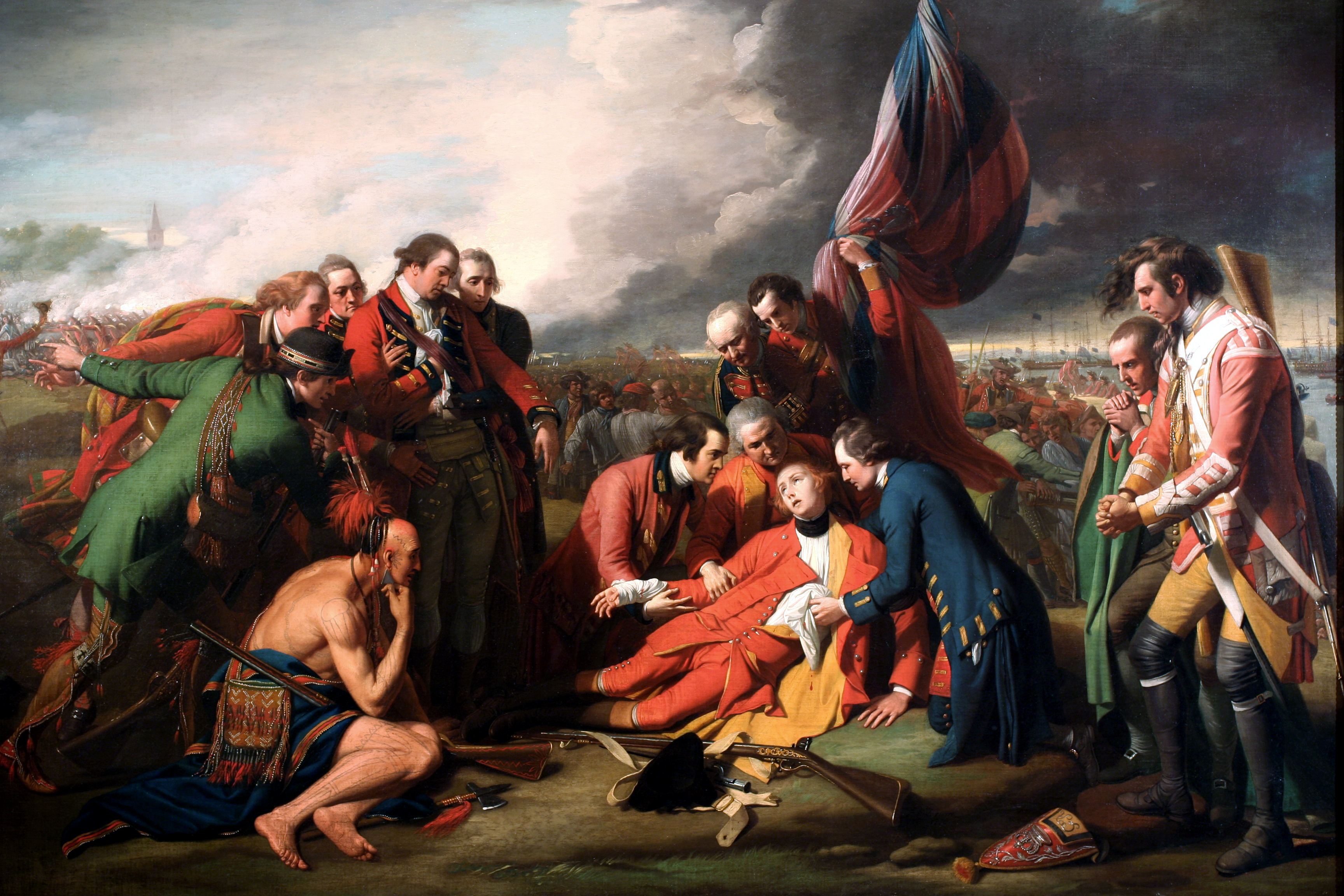
Jacques-Louis David, Oath of the Horatii, 1785
An ancient Roman legend said that the Roman family had three sons and were willing to fight against a threat. It depicts patriotic courage and shows a lot to refer to the classic artwork. Again, the subject matter is not traditional. Sharp lines, muted colors, and stoic patriotism.
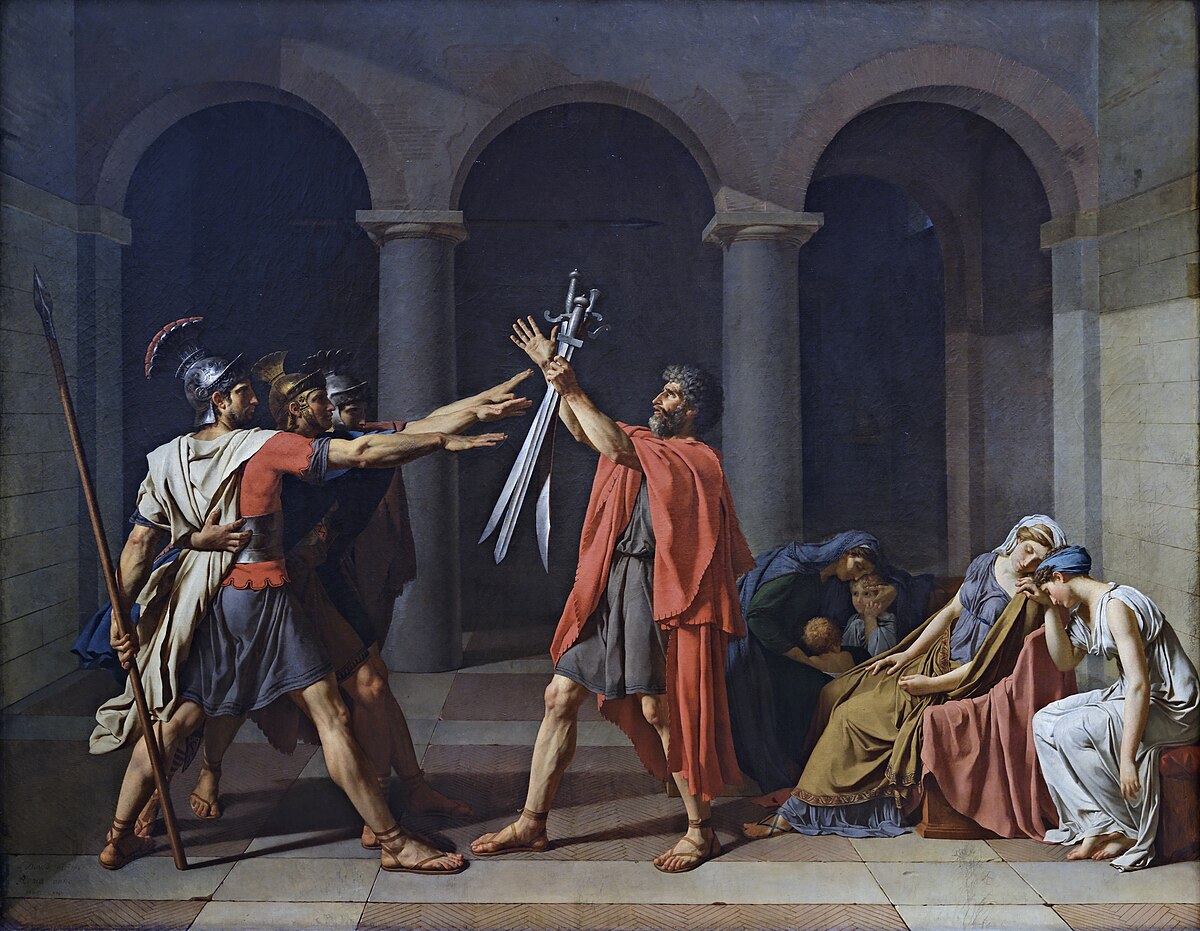
The initial biases applied to the understanding of these cultures
Spanish conquistadors labeled Aztec cities as "barbaric" despite Tenochtitlán’s aqueducts and grid layout (comparable to Rome). We also don’t know about them because they are either completely overgrown or buried. The Aztec capital, Tenochtitlan, was built on top of Mexico City by the Spanish conquistadors. We are still finding artifacts from the capital during repairs in Mexico City. Scholars now acknowledge these biases as colonial propaganda.
How are these cultures better understood today, concerning ancient Classical culture
We know they were just as advanced as the Romans with their urban grid planning for the street of the dead, their similarly engineered aqueduct system known as chinampas, which was the Aztecs’ version of floating gardens. They created their version of monumental art, like the Olmec colossal heads. They also created the Temple of the Feathered Serpent, which had tunnel passages, and they found mass sacrifices buried with obsidian weapons and jade ornaments.
The ethics involved in caring for the remains of monuments from the Classical world
The Convention on the Means of Prohibiting and Preventing the Illicit Import, Export, and Transfer says any antiquity sold today needs to have valid proof that it was found before 1970, or if found later, it was acquired legally to verify it wasn’t looted. Theodore Roosevelt passed the 1906 Antiquities Act to stop/control looting going on in New Mexico, Arizona, etc. NAGPRA mandates the repatriation of Native American remains/artifacts to tribes. The Historic Sites Act of 1935 gave the National Park Service the right to preserve cultural heritage.
What is the future of archaeology (and the continued Rediscovery of the Classical World) may look like
Places like Starbucks and McDonald's will be the most difficult to understand, noting that future archaeologists might mistake Starbucks for a religion with a goddess crown and with shrines and temples everywhere. The same could be said about McDonald's as a deity. Will they think we lack literacy when all of our interactions are online? All are good questions.
The long history of presenting the Classical world to the general public through fiction and film
Cleopatra had the most movies made about her as a classical figure.
Cleopatra (1963): Most expensive film ever at the time ($44M)—Elizabeth Taylor’s portrayal shaped modern views of Egypt.
Spartacus (1960): Fictionalized slave revolt; Kirk Douglas vs. Roman elites.
Modern Films:
Gladiator (2000): Revived interest in Rome (but historically inaccurate).
Troy (2004): Mixed Homer’s Iliad with Hollywood action.
Some of the main themes that have shown up in popular books and movies
Mythology & Gods:
Disney Hercules 1997 (Greek myths simplified for kids).
Percy Jackson and the Olympians 2023: Modernizes gods as flawed, relatable figures.
Epic Journeys:
The Odyssey: Adapted countless times O Brother, Where Art Thou? 2000 is a Depression-era retelling.
Jason and the Argonauts 1963: Stop-motion skeletons are still iconic.
Love & Tragedy:
Antigone (Sophocles) 2005: Adapted in films like The Island.
Pompeii 2014: Disaster romance with Vesuvius as the villain.
The concerns about having the general public experience the classical world through these media
People could mistakenly take what they’ve seen on TV as facts instead of fiction. Nowadays, Cleopatra is often shown as a seductress when in reality, Cleopatra was a polyglot scholar. Many believe Gladiators die in battle, when that’s not the case, and these movies can push stereotypes about Greek and Roman people in modern times.